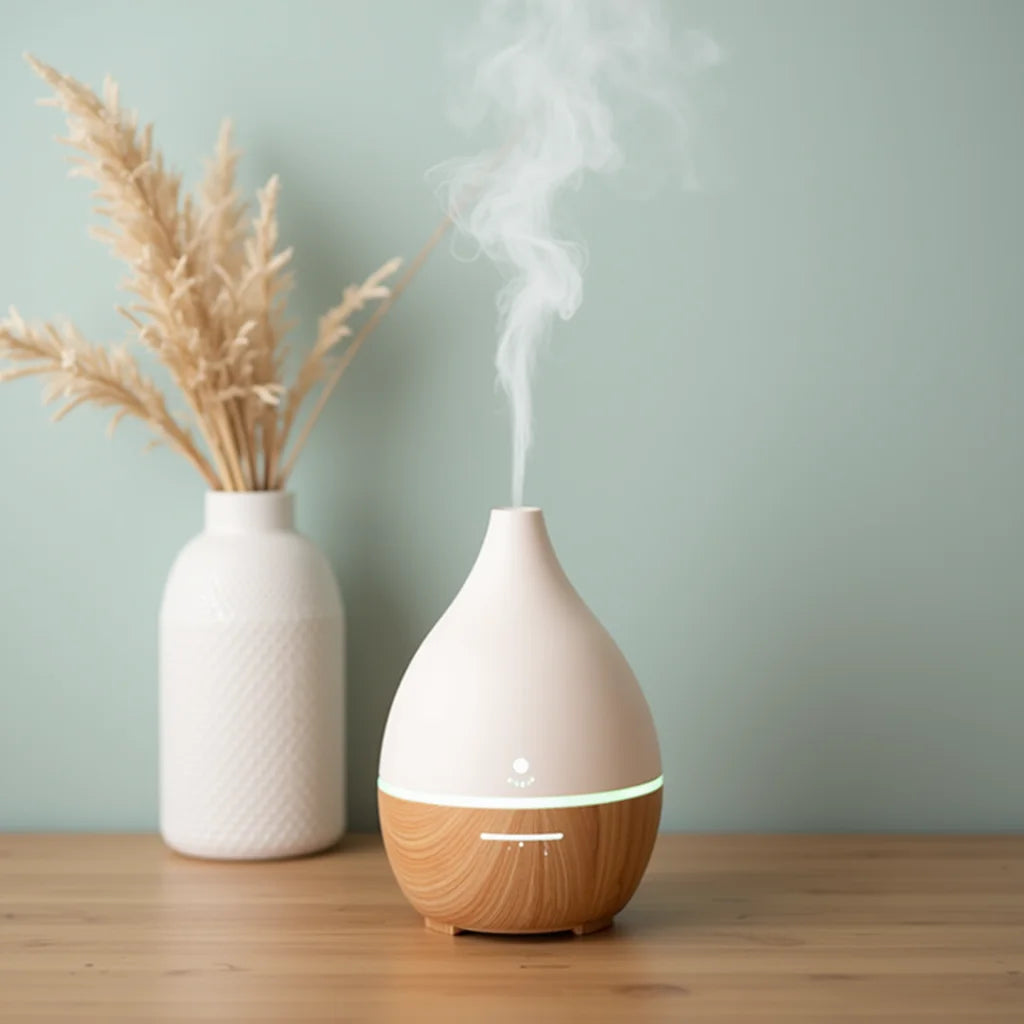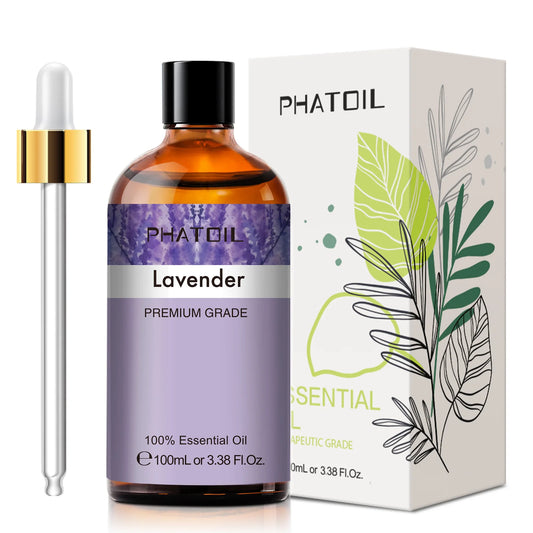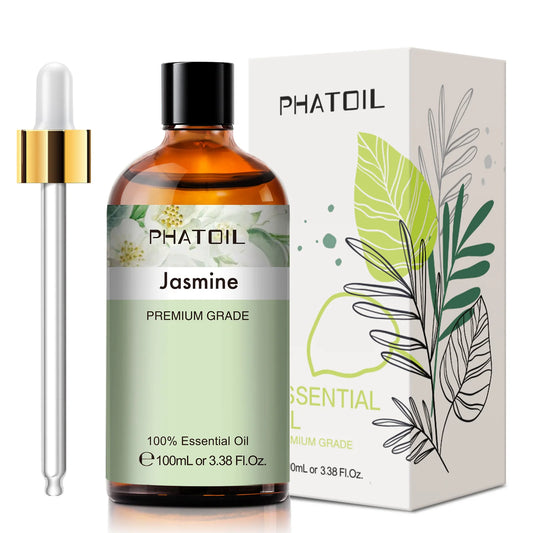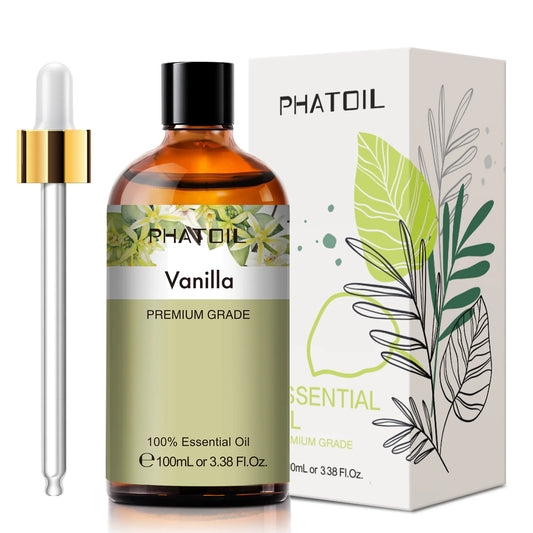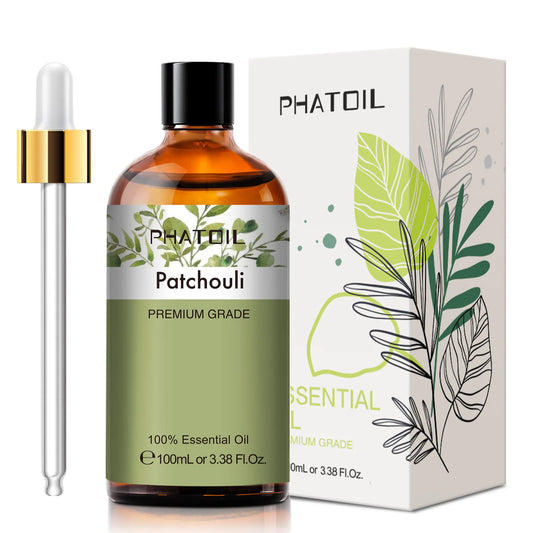Updated on: 2025-08-30
Table of Contents
- Aromatherapy Diffuser Basics and Gentle Benefits
- Essential Tips for Using an Aromatherapy Diffuser
-
Detailed Step-by-Step Process for an Aromatherapy Diffuser
- Step 1: Choose your diffuser type
- Step 2: Place your diffuser thoughtfully
- Step 3: Fill the reservoir or attach the bottle
- Step 4: Add the right number of drops
- Step 5: Select mist, timer, and lighting
- Step 6: Start and observe the scent level
- Step 7: Care after each session
- Step 8: Deep clean on a routine
- Summary & Takeaway on Aromatherapy Diffusers
- Q&A: Common Aromatherapy Diffuser Questions
- About the Author: Aromatherapy Diffuser Insights
An aromatherapy diffuser can be a gentle way to bring a pleasant scent into your space. If you are new to the topic, you might be comparing an aromatherapy diffuser with an essential oil diffuser or an aroma diffuser and wondering whether there is a difference. In everyday use, people often use these terms interchangeably. This guide offers a friendly walkthrough of how to pick a diffuser that suits your room, how to use it with care, and how to keep it running smoothly.
Aromatherapy Diffuser Basics and Gentle Benefits
An aromatherapy diffuser turns concentrated oils into a light aroma that disperses through the air. There are two common types:
- Ultrasonic diffuser: Uses water and ultrasonic vibration to create a cool mist that carries the scent. This option is popular, quiet, and often includes settings such as a timer and soft lighting.
- Nebulizing diffuser: Uses air pressure to disperse pure oil without water. It often delivers a stronger scent in a shorter time and may suit larger or open areas when used thoughtfully.
When choosing the best aromatherapy diffuser for large rooms, consider the output strength and the recommended coverage area. A nebulizing diffuser may provide a more concentrated aroma, while a larger-capacity ultrasonic diffuser can run longer with a gentle mist. Many find it helpful to look for an aromatherapy diffuser with timer and auto shut-off, which offers a simple way to manage run time and provide peace of mind.
If you prefer a compact, water-based device with an understated look, an ultrasonic style like the Raindrop Aroma Humidifier may be a pleasant fit. If you enjoy a cozy, flame-like aesthetic, you might also explore the BlissFlame Aroma Diffuser for an inviting ambience.
Essential Tips for Using an Aromatherapy Diffuser
The suggestions below aim to keep your experience simple, calm, and consistent.
- Start with a light scent level. You can always add more drops after a few minutes if desired.
- Match diffuser type to room size. Nebulizing diffusers may suit larger spaces; ultrasonic diffusers often work well in small to medium rooms.
- Choose an aromatherapy diffuser with timer and auto shut-off when possible. These features help manage run time with ease.
- Place your diffuser on a stable, flat surface at least an arm’s length from walls or delicate surfaces.
- Use fresh, quality oils. If you are building a starter set, browsing a dedicated collection of essential oils may be helpful.
- Wipe the reservoir frequently and deep clean on a routine schedule to prevent residue.
- Keep airflow in mind. A gentle current can help disperse the aroma more evenly.
- Choose quiet operation if you prefer a low-noise environment; most ultrasonic units are designed to be unobtrusive.
- Experiment with one scent at a time before blending, so you can understand each oil’s intensity.
- Store oils in a cool, shaded place with lids closed firmly to preserve freshness.
Detailed Step-by-Step Process for an Aromatherapy Diffuser
The steps here focus on an ultrasonic diffuser, with notes for nebulizing models where helpful.
Step 1: Choose your diffuser type
If you prefer a soft, steady mist, an ultrasonic diffuser is a gentle choice. If you want a more concentrated scent without water, a nebulizing diffuser may be suitable. For large rooms, look at output and coverage to find the best aromatherapy diffuser for large rooms in your home.
Step 2: Place your diffuser thoughtfully
Set the diffuser on a level surface away from edges and electronics. Give it open space so the aroma can travel. A shelf or console table in the center or a slightly elevated position often helps with even distribution.
Step 3: Fill the reservoir or attach the bottle
For ultrasonic units, add clean, room-temperature water up to the fill line. Avoid overfilling. For a nebulizing diffuser, attach the essential oil bottle as instructed by the device, ensuring a snug fit without overtightening.
Step 4: Add the right number of drops
Begin with a modest amount. For a typical 100 ml ultrasonic reservoir, 3–5 drops is a gentle starting point. For larger tanks, try 6–10 drops. With a nebulizing diffuser, start with a low output setting or a brief run time to gauge intensity.
Step 5: Select mist, timer, and lighting
Choose intermittent mist if you prefer a more measured scent, or continuous mist for a short session. Use a timer that fits your plan. Auto shut-off is a considerate feature that can prevent the unit from running when the water is low. If your diffuser includes lighting, choose a soft setting that suits the mood.
Step 6: Start and observe the scent level
Turn on the diffuser and wait a few minutes. If the aroma is lighter than expected, add one or two more drops. If it feels too strong, pause the session, add water (ultrasonic), or reduce the output (nebulizing) before continuing.
Step 7: Care after each session
Empty any remaining water from an ultrasonic diffuser after use. Wipe the reservoir with a soft cloth and allow it to dry. For nebulizing models, close the oil bottle tightly and keep the device dust-free.
Step 8: Deep clean on a routine
Every so often, follow the manufacturer’s cleaning instructions to remove residue or buildup. Consistent care supports a clean aroma and can help your device perform reliably over time.
Summary & Takeaway on Aromatherapy Diffusers
An aromatherapy diffuser offers a simple way to add a gentle fragrance to your space. Ultrasonic diffusers deliver a cool mist and are often quiet and versatile. Nebulizing diffusers can feel more potent and may suit larger rooms or short, focused sessions. For added ease, many people appreciate features such as a timer and auto shut-off. Start with fewer drops, observe how the aroma feels, and adjust as needed. With small, steady habits—good placement, mindful settings, and regular care—your essential oil diffuser can become a calm, dependable part of your routine.
If you enjoy soft floral notes, you might like exploring a single-oil option such as Lavender Oil. It pairs well with both ultrasonic and nebulizing units and works nicely for a gentle, welcoming ambience.
Q&A: Common Aromatherapy Diffuser Questions
How many drops of essential oil should I put in an aromatherapy diffuser?
For a small ultrasonic diffuser (around 100 ml), 3–5 drops is a reasonable starting point. For a medium reservoir (200–300 ml), many users try 6–10 drops. For a larger tank, begin with 8–12 drops and adjust based on your preference and the oil’s strength. With a nebulizing diffuser, consider starting with a low output setting or shorter run times, since the aroma can be more concentrated. If the scent feels too light, add one or two more drops and pause to reassess.
Can you sleep with an aromatherapy diffuser on?
If you plan to use a diffuser at night, a timer and auto shut-off can be helpful. Many people prefer intermittent or short timed sessions before sleep and then allow the device to turn off. If your unit has lights, dim or no light may feel more comfortable in a dark room. Please choose settings that feel gentle and suitable for your space and routine.
Which is better: an ultrasonic diffuser or a nebulizing diffuser?
Each type has its strengths. An ultrasonic diffuser offers a water-based mist, often quiet operation, and longer run times. A nebulizing diffuser disperses undiluted aroma and can feel more intense, which some prefer for larger or open rooms. Your choice may depend on the room size, desired intensity, and how you like to schedule your sessions. If you enjoy water-based mist and versatile features, an ultrasonic style like the Raindrop Aroma Humidifier is a thoughtful option. If you like a cozy, visual ambience, consider the BlissFlame Aroma Diffuser.
How often should I clean my diffuser?
A quick wipe after each use helps keep residue down, especially for ultrasonic models. A deeper clean on a regular schedule—such as once a week with frequent use—can maintain consistent aroma and smooth performance. Always follow your device’s instructions for safe care.
About the Author: Aromatherapy Diffuser Insights
אלעד אלעד
אלעד אלעד explores aroma, design, and gentle routines that make spaces feel welcoming. With hands-on experience across ultrasonic and nebulizing diffuser styles, אלעד shares practical tips that are easy to follow. Thank you for reading, and please enjoy creating a calm, fragrant corner in your day.

